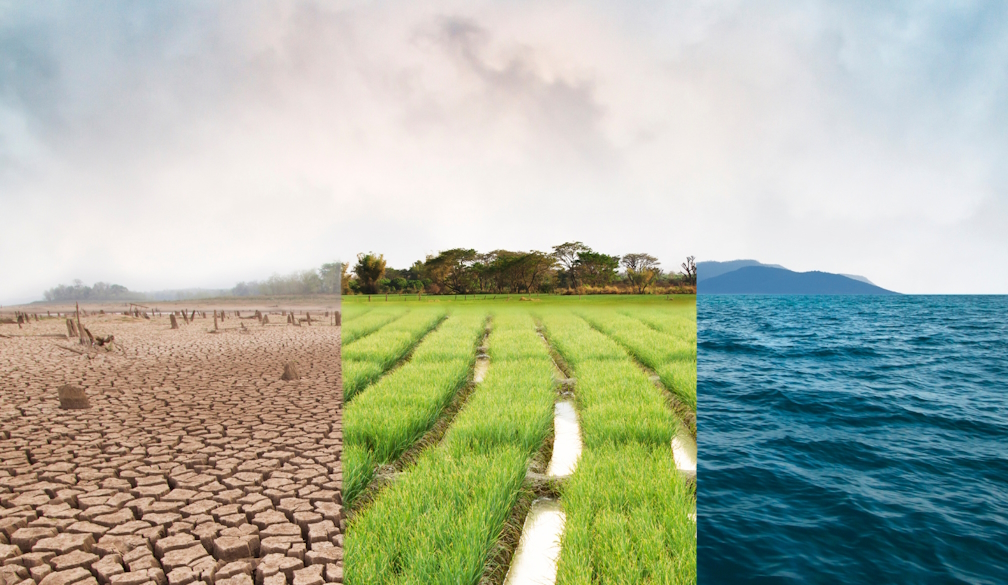After the winds, now comes the rain and floods. Here’s what you need to know about ex-Cyclone Alfred
- Written by Steve Turton, Adjunct Professor of Environmental Geography, CQUniversity Australia

After a wet and wild night, residents of southeast Queensland and northeast New South Wales are assessing the damage wrought by Cyclone Alfred, which has been downgraded to a tropical low. While the damaging winds have dissipated, heavy rain and the potential for major flooding is the main concern now.
The low is expected to cross the mainland coast between Maroochydore and Bribie Island on Saturday morning, before moving inland and weakening later in the day.
Heavy rain and possible flash flooding is possible on Saturday and Sunday in parts of the Mid North Coast and Northern Rivers in NSW. Rivers are rising. Severe weather warnings and flood warnings are current for southeast Queensland[1] and northeast NSW[2].
According to media reports[3], Lismore was expected to flood around noon and low-lying surrounding areas were already flooded.
A video update on ex-Tropical Cyclone Alfred released by the Bureau of Meteorology on Saturday morning.Six-hourly rainfall totals between 70mm and 130mm are likely, and may reach about 200mm in Queensland’s Border Ranges. Over a 24-hour period, rainfall totals between 150mm and 200mm are likely, and may increase to between 200mm and 300mm in some areas.
As of Saturday morning, authorities had asked Queensland residents in the storm’s path to take shelter[4]. The State Emergency Service says northern NSW is facing “three natural disasters in one”, with gale-force winds, heavy rain and widespread flooding expected over the coming days.
In short: the danger is not over. Residents in affected areas should remain cautious and heed official advice, to keep themselves safe.
High alert for heavy rain
Intense rain bands are forming between converging (or colliding) winds: warm, moist winds from the northeast, and southeast winds from the Coral Sea. As the winds converge, they push saturated air into cooler parts of the atmosphere where it condenses and may fall as torrential rain.
These rain bands can be very slow-moving, sometimes sitting almost stationary for hours. This means they can dump huge amounts of water.
That’s what we need to watch for now. If a slow-moving rain band forms over a catchment area, it could lead to dangerous flash flooding.
At the moment, a convergence zone seems to be forming over the south Sunshine Coast and north Brisbane. This may mean northern NSW may not bear the worst of the rain. However, that region has received solid rain over the past few days and is certainly not off the hook yet.
Northern NSW has already been hit by devastating flooding in recent years, most recently in February 2022[7]. Many of its settlements, including Lismore, are along or close to major river courses. Residents are understandably anxious[8] about what the next few days of rain may bring.
Heavy rainfall in the Brisbane catchments remains a major concern. In Brisbane, some 20,000 properties have been warned of impacts ranging from minor inundation in yards to significant flooding inside homes. Areas most at risk include Nudgee Beach, Brighton, Windsor, Ashgrove, Morningside and Rocklea.
The below flood maps were produced by Brisbane City Council earlier this week. Note, they include the potential for storm surge risk which is all but dissipated now.
Watching the winds and beach erosion
Overnight, high winds caused quite a lot of damage, including trees coming down on houses.
While the cyclonic winds have dissipated, there’s a risk that thunderstorms will drag down stronger winds from higher in the atmosphere on Saturday. Thunderstorm activity is possible from Brisbane’s south down to northern NSW. Some areas may experience damaging wind gusts as rain squalls come through.
Coastal erosion will continue for a while yet. Cyclone Alfred released a lot of energy into the ocean and that will take a while to release as damaging swells.
Swells remain high from the northern Sunshine Coast down to northern NSW, and beaches remain closed.
Beaches have been pummelled over the past few days, eating into the sand and creating cliff faces in dunes. Much work will be needed over the next few weeks and months to restore that sand.
Widespread power outages
According to the ABC, more than 200,000 homes were without power [9] on Friday across south-east Queensland and northern NSW. The problem was set to worsen on Saturday.
Emergency officials have warned residents not to approach downed powerlines[10] because they may be live.
What next?
The below map released by the bureau on Saturday predicts the weather system’s future movement and intensity. The grey zone indicates the range of tracks the centre of the ex-cyclone centre may follow.
It shows the system tracking west on Saturday, out to near the town of Dalby, then heading to the southwest.
This movement will take moisture with it, bringing rain to some inland catchments from Saturday evening and into Sunday.
The rainfall predictions are dependent on the movement and position of this erratic weather system. If it slows down inland near the coast on Saturday, the ex-cyclone will keep feeding itself with moisture from the ocean.
This cyclone has already tricked scientists a few times over the past fortnight. We will continue to watch it closely.
References
- ^ southeast Queensland (www.bom.gov.au)
- ^ northeast NSW (www.bom.gov.au)
- ^ media reports (www.smh.com.au)
- ^ to take shelter (www.disaster.qld.gov.au)
- ^ Bureau of Meteorology, Himawari-9 satellite (satview.bom.gov.au)
- ^ CC BY-SA (creativecommons.org)
- ^ recently in February 2022 (theconversation.com)
- ^ understandably anxious (theconversation.com)
- ^ more than 200,000 homes were without power (www.abc.net.au)
- ^ not to approach downed powerlines (au.news.yahoo.com)




















